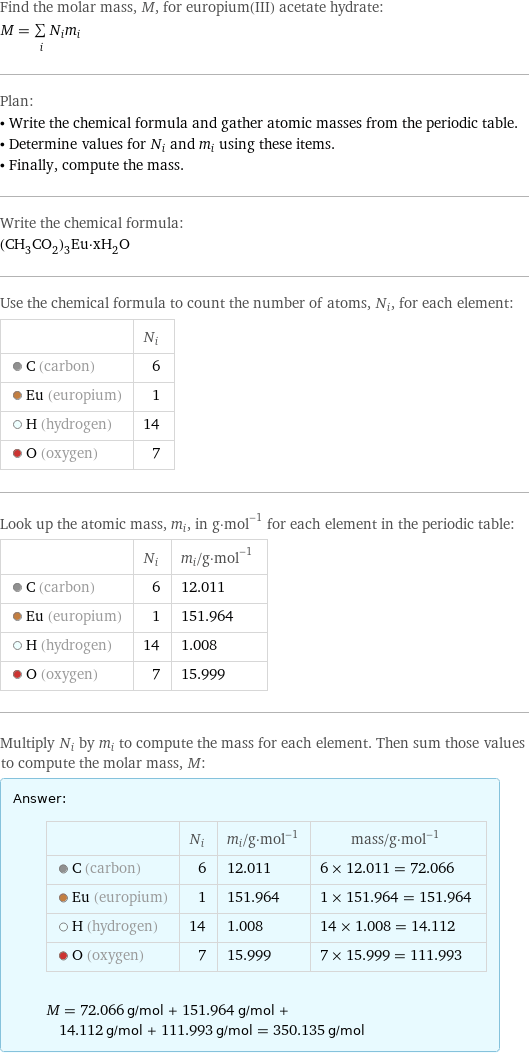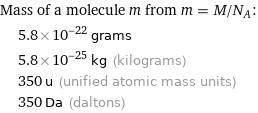Input interpretation

europium(III) acetate hydrate | molar mass
Result

Find the molar mass, M, for europium(III) acetate hydrate: M = sum _iN_im_i Plan: • Write the chemical formula and gather atomic masses from the periodic table. • Determine values for N_i and m_i using these items. • Finally, compute the mass. Write the chemical formula: (CH_3CO_2)_3Eu·xH_2O Use the chemical formula to count the number of atoms, N_i, for each element: | N_i C (carbon) | 6 Eu (europium) | 1 H (hydrogen) | 14 O (oxygen) | 7 Look up the atomic mass, m_i, in g·mol^(-1) for each element in the periodic table: | N_i | m_i/g·mol^(-1) C (carbon) | 6 | 12.011 Eu (europium) | 1 | 151.964 H (hydrogen) | 14 | 1.008 O (oxygen) | 7 | 15.999 Multiply N_i by m_i to compute the mass for each element. Then sum those values to compute the molar mass, M: Answer: | | | N_i | m_i/g·mol^(-1) | mass/g·mol^(-1) C (carbon) | 6 | 12.011 | 6 × 12.011 = 72.066 Eu (europium) | 1 | 151.964 | 1 × 151.964 = 151.964 H (hydrogen) | 14 | 1.008 | 14 × 1.008 = 14.112 O (oxygen) | 7 | 15.999 | 7 × 15.999 = 111.993 M = 72.066 g/mol + 151.964 g/mol + 14.112 g/mol + 111.993 g/mol = 350.135 g/mol
Unit conversion

0.35013 kg/mol (kilograms per mole)
Comparisons

≈ 0.49 × molar mass of fullerene ( ≈ 721 g/mol )

≈ 1.8 × molar mass of caffeine ( ≈ 194 g/mol )

≈ 6 × molar mass of sodium chloride ( ≈ 58 g/mol )
Corresponding quantities

Mass of a molecule m from m = M/N_A: | 5.8×10^-22 grams | 5.8×10^-25 kg (kilograms) | 350 u (unified atomic mass units) | 350 Da (daltons)

Relative molecular mass M_r from M_r = M_u/M: | 350